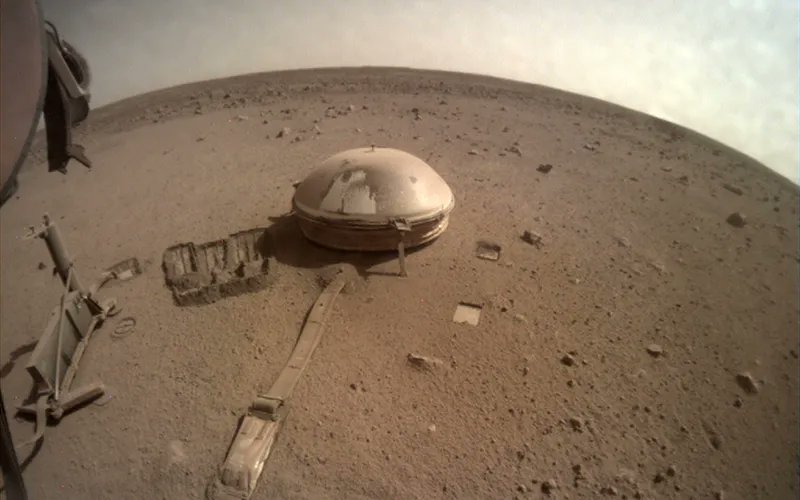Space science doesn’t always go as planned. Sometimes when scientists think they’ve made a remarkable discovery that will make human expansion into the cosmos easier, they are just flat-out wrong. But the beauty of science is that it corrects itself in the presence of new data. The people responsible for planning future Mars missions will have to make just such a correction as new data has come in on the availability of water on the red planet. There’s not as much of it as initially thought. At least not around the equator where InSight landed.
That is the primary finding of a new study published by a team at the Scripps Institute of Oceanography. They found that InSight, a Mars lander that landed on the red planet in 2018, doesn’t have any water (or at least very little) within the soil 300 meters below it.
InSight doesn’t have a 300m long drill to directly sample whether there is water below it. But it does have a seismometer. That seismometer was designed to detect vibrations such as marsquakes (the Martian equivalent of earthquakes) and the energy from meteorite impacts. But the vibrations from those events aren’t simply immediately broadcast directly to InSight’s sensors.
They are filtered through the media directly below the lander, and different media would have different filtering properties. For example, dry material would react differently to vibrations than wet, claylike material. That difference is what the Scripps team used as the basis of their study.
Using data collected for other purposes, the researchers ran a series of 10,000 simulations using different types of material as a transfer medium for the signals that InSight detected. They found that the media that best fit the signals InSight was seeing were dry, porous rocks that contained hardly any water.
This came as a surprise, as many scientists had expected water, at least in its frozen form, to be ubiquitous even at the equatorial latitudes where InSight is located. Water is helpful for various things on Mars, the two main ones being human life support and the search for life. A dry, porous material is much less likely to have fossils or similar evidence of extinct life than a wet, claylike mixture.
Credit – NASA YouTube Channel
As such, this would seem like a setback for Martian explorers. It now seems highly unlikely that there would be enough water at the equator to support a permanent human settlement there. However, as has been highly publicized over the last few years, there appears to be plenty of water at the Martian poles, so all is not lost for the future exploration of the red planet.
These ongoing discoveries, combined with using new data in unique ways that they weren’t originally intended, are precisely how science is supposed to work. So while sometimes both researchers and space enthusiasts alike won’t like the answers that the data points to, it’s better to face it head-on rather than going in blindly or, worse yet, willfully ignoring the truth.
Learn More:
UCSD / Scripps Institution of Oceanography – SURPRISE, SURPRISE: SUBSURFACE WATER ON MARS DEFIES EXPECTATIONS
Wright et al – A Minimally Cemented Shallow Crust Beneath InSight
UT – Is There Martian Salty Water At The Red Planet’s Equator? These Lines May Be The Smoking Gun
UT – New Images Reveal “Pure” Water Ice at Low Latitudes on Mars
Lead Image:
An image of InSight’s seismometer on Mars.
Credit – NASA / JPL-Caltech

